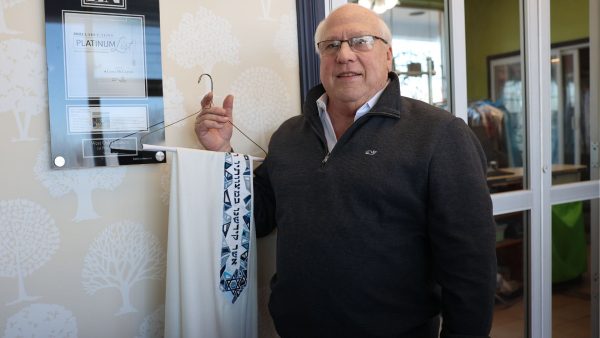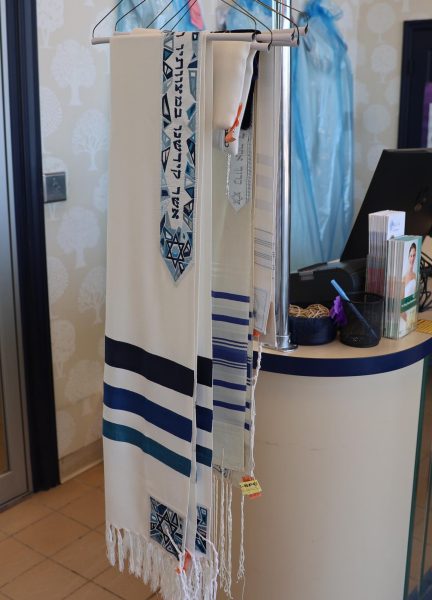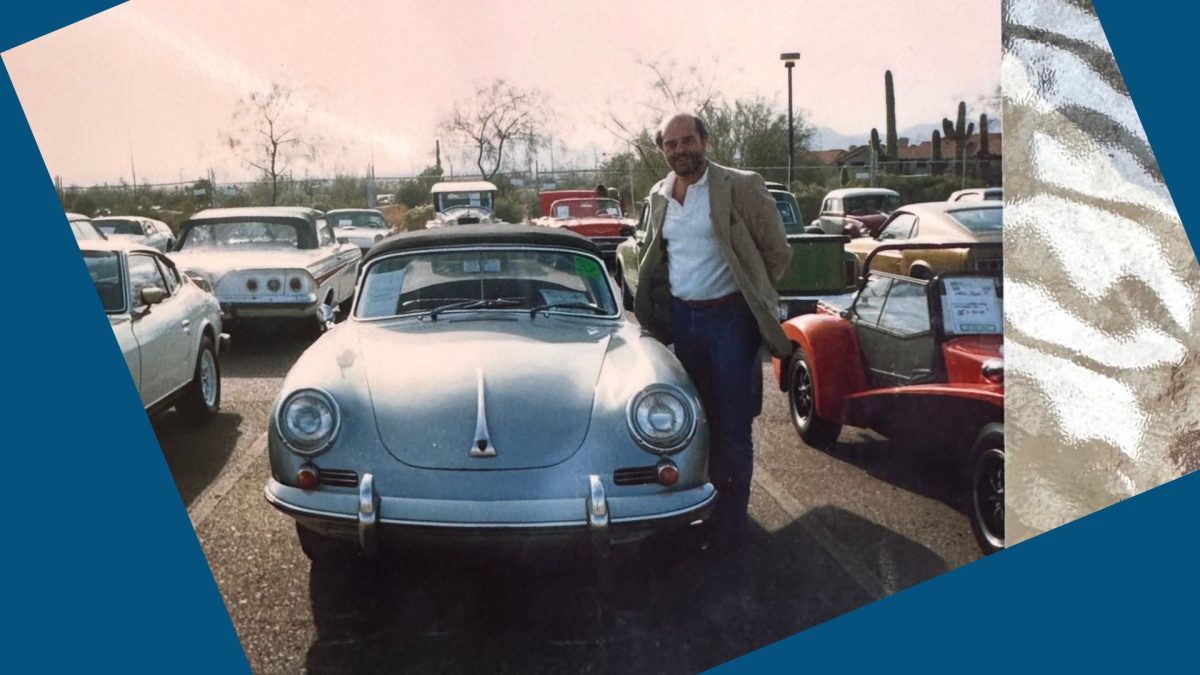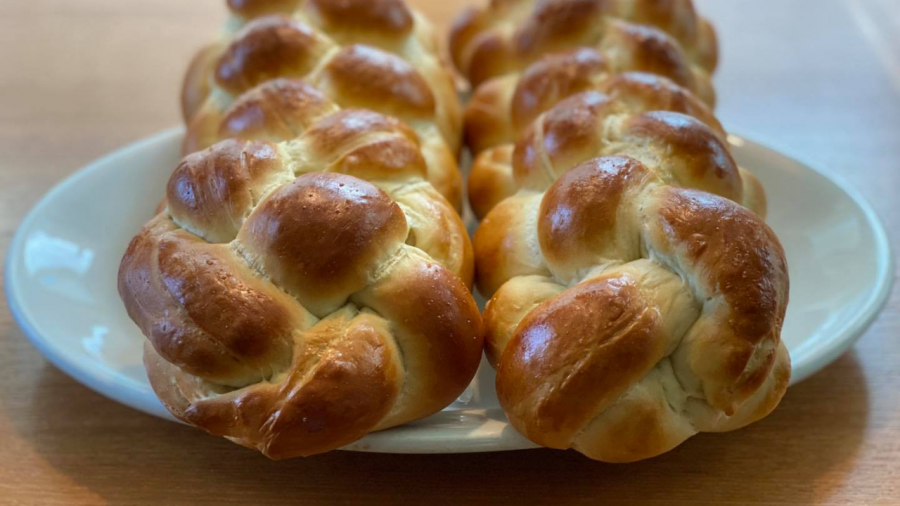For many Jewish families, a tallit isn’t just a garment—it’s a link to tradition, faith, and family history. Whether passed down from a beloved grandparent or gifted at a bar mitzvah, these prayer shawls carry deep personal and religious significance. But what happens when they need cleaning?
The spiritual side of tallit care
Rabbi Jeffrey Abraham of Congregation B’nai Amoona emphasizes that caring for a tallit is about more than just preserving fabric—it’s about honoring a sacred object.
“We are told that our garments should be clean for the holy days,” Rabbi Abraham said. “Before Rosh Hashanah, you should clean your tallit, just like you wear your nicest clothing to services. It’s part of presenting your best self before God.”
ADVERTISEMENT
That’s where Warren Schultz comes in.
Proper methods for cleaning a tallit

Schultz, owner of West Oak Cleaners, has been caring for St. Louis’ tallitot for over 50 years, continuing a service his father, DJ Schultz, began decades ago. “Nobody knows how to clean a tallit,” Schultz said. “If you take it to most dry cleaners, they wouldn’t even know what it is, let alone how to handle it.”
For over half a century, West Oak Cleaners has been offering free tallit cleaning to ensure they are properly maintained.
The most common issue Schultz sees is dirt along the neckline, especially on older wool tallitot. “Most aren’t really dirty, just a little worn where they rest on the shoulders,” he said.
ADVERTISEMENT
For wool tallitot, Schultz recommends gentle hand washing with mild detergent. “You don’t want to throw it in a machine,” he explained. “The tzitzit can get tangled, and wool can shrink if it’s not handled properly.”
However, in cases of serious stains—like spilled coffee or wine—Schultz uses advanced wet-cleaning detergents and computerized machines that mimic hand-washing. “These new detergents are so gentle, they don’t cause shrinkage at all,” he said.
Silk tallitot require extra caution. “Silk ones should really be dry cleaned,” Schultz advised. “Some have gold trim or painted designs that can be damaged if washed the wrong way.”
Restoring heirloom tallitot

Over the years, Schultz has saved countless tallitot that families thought were beyond repair. “We’ve had people bring in their grandfather’s tallit, thinking there was no way to salvage it,” he said. “We’ve been able to restore some to almost perfect condition. It’s really meaningful when someone gets to wear a family tallit for a wedding or bar mitzvah.”
One particularly memorable restoration involved an elderly man who wanted to pass his tallit down to his grandson. “It was in terrible condition, but we got it cleaned up in time for the bar mitzvah,” Schultz recalled. “It meant everything to that family.”
What to do with a damaged or aging tallit
Beyond keeping it clean, the question of what to do with a damaged or aging tallit can also carry religious significance.
“Some people have the tradition of burying a tallit, just as we bury religious texts that contain God’s name,” Rabbi Abraham explained. “This is especially true if the blessing for putting on the tallit is printed on it. But if God’s name isn’t present, there’s no requirement to bury it—it’s just a matter of personal preference.”
For those who wish to keep a damaged tallit, there are creative ways to repurpose it. “Some families turn an old tallit into a chuppah (wedding canopy), a Torah cover, or other meaningful religious items,” he noted.
One key concern is the tzitzit, the knotted fringes on each corner of the tallit.
“Jewish law states that the knots of the tzitzit must remain intact,” Rabbi Abraham said. “There’s actually a running joke among rabbis—someone brings a tallit to the wrong dry cleaner, and they say, ‘Don’t worry, we untied all those knots for you!’ That’s why it’s so important to take it to someone who knows what they’re doing.”
Schultz is well aware of this rule. “That’s why we handle each tallit carefully,” he said. “We never touch the knots.”
Why free cleaning of a tallit matters
Schultz’s father, DJ Schultz, began offering free tallit cleaning decades ago as a way to give back to the Jewish community.
“He was just a very giving person,” Schultz said. “He felt that nobody knew how to clean a tallit properly, so he wanted to provide that service at no cost.”
Rabbi Abraham sees it as an extraordinary act of generosity. “This is a service that benefits every Jewish denomination,” he said. “Even in Reform Judaism, people wear a tallit at their bar or bat mitzvah, and in Conservative and Orthodox communities, some people wear one every day. Offering free cleaning is a beautiful example of tzedakah (charity).”
As Schultz put it, “A tallit isn’t just another piece of clothing—it’s something sacred. When you take care of it, you’re taking care of something bigger than yourself.”
| RELATED: Florida synagogue sets world record for largest tallit
















